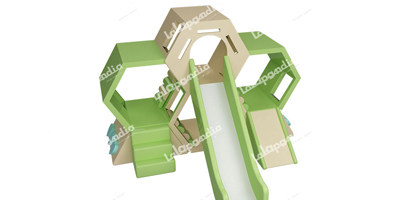2025.04.02
Posted By: Peter
In the early years of a child’s life, play is not just a pastime it’s a critical tool for learning, physical development, and emotional growth. Toddler soft play equipment has emerged as a popular choice for parents and educators alike, offering a safe and engaging environment for young children to explore.

Soft play environments are engineered to minimize injury risks while encouraging active play. Key safety features include:
Cushioned Surfaces: Foam blocks, padded floors, and soft climbing structures absorb impact, reducing the likelihood of bruises or falls a common concern for toddlers still mastering motor skills.
Rounded Edges: All equipment is designed without sharp corners or hard edges, ensuring even the most energetic play remains safe.
Age Appropriate Layouts: Structures are scaled to suit toddlers’ physical abilities, with low heights, gentle slopes, and secure handholds to foster confidence and independence.
By eliminating hazards found in traditional playgrounds, soft play zones allow children to take risks safely, building coordination and resilience.
The materials used in soft play equipment are carefully selected to ensure they are safe for children. Leading manufacturers prioritize:
Certified Non-Toxic Materials: Reputable brands use materials like high-density EPE foam or polyurethane foam, which are free from harmful chemicals such as BPA, phthalates, and heavy metals. These materials are rigorously tested to meet international safety standards.
Hypoallergenic Fabrics: Covers for soft play mats and equipment are often made from breathable, machine-washable fabrics that resist mold, mildew, and dust mites, making them suitable for children with allergies or sensitive skin.
Flame Retardant Features: Many soft play products include flame-resistant coatings, adhering to safety regulations while remaining gentle on children’s delicate skin.
Beyond safety, soft play offers numerous benefits for a child’s growth:
Physical Development: Climbing, crawling, and balancing on soft structures enhance motor skills, muscle strength, and spatial awareness.
Cognitive Growth: Interactive elements like tunnels, slides, and shapes encourage problem-solving and imaginative play.
Social Skills: Shared play in soft play areas teaches toddlers to take turns, communicate, and collaborate with peers.
Soft play equipment is adaptable to various settings:
Home Use: Compact, lightweight sets allow children to play safely in living rooms or nurseries.
Educational Settings: Schools and daycare centers use larger soft play structures to create inclusive learning environments.
Commercial Spaces: Play cafes and indoor playgrounds rely on soft play to entertain children while ensuring parent-approved safety.
Toddler soft play combines fun, learning, and safety in one package. By prioritizing non-toxic materials and thoughtful design, these products create a secure space where children can explore, develop, and thrive. For families seeking a secure and enriching environment, toddler soft play out as a modern solution that prioritizes health, development, and peace of mind.